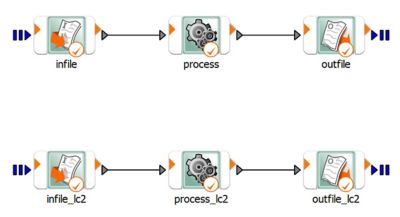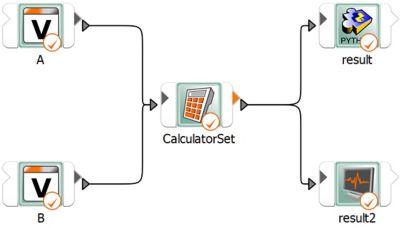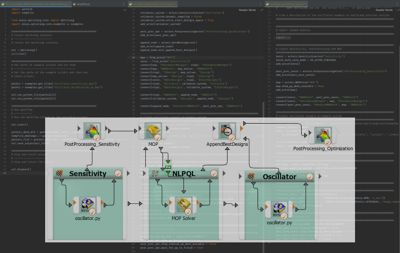-
-
Kostenlose Software für Studierende
Ansys unterstützt die nächste Generation von Ingenieur*innen
Studenten erhalten kostenlosen Zugang zu erstklassiger Simulationssoftware.
-
Verbinden Sie sich jetzt mit Ansys!
Gestalten Sie Ihre Zukunft
Stellen Sie eine Verbindung mit Ansys her, um zu erfahren, wie Simulation Ihren nächsten Durchbruch vorantreiben kann.
Länder und Regionen
Kostenlose Demoversionen
Produkte & Dienstleistungen
Lernportal
Über das Unternehmen
Back
Produkte & Dienstleistungen
Back
Lernportal
Ansys unterstützt die nächste Generation von Ingenieur*innen
Studenten erhalten kostenlosen Zugang zu erstklassiger Simulationssoftware.
Back
Über das Unternehmen
Gestalten Sie Ihre Zukunft
Stellen Sie eine Verbindung mit Ansys her, um zu erfahren, wie Simulation Ihren nächsten Durchbruch vorantreiben kann.
Kostenlose Demoversionen
ANSYS BLOG
September 11, 2023
Customize and Automate Robust Design Optimization with Ansys PyoptiSLang
With the latest innovations in Ansys 2023 R2, designers and engineers using Ansys optiSLang for robust design optimization (RDO) can now customize and automate their projects in Python.
PyoptiSLang is part of PyAnsys, a suite of open-source software that allows you to interact with several Ansys solvers at once within the Python ecosystem using a programmable interface. This means you can create specialized solutions in Python while integrating Ansys’ structural, electromagnetic, and composites simulation solvers (among others), along with other computer-aided engineering (CAE) applications and tools.
You can use PyoptiSLang to programmatically create, interact with, and control an optiSLang project. Similarly, you can use it to create custom scripts that speed up and automate simulations. In addition to its convenience, PyoptiSLang offers optiSLang users more creative freedom and design possibilities with an opportunity to work in a Python environment in conjunction with PyAnsys libraries or external Python libraries.

PyoptiSLang generates a workflow using a text-based process application
Enhance RDO with PyoptiSLang
Constantly evolving, optiSLang remains on the leading edge of challenges caused by CAE-based RDO. Its state-of-the-art algorithms efficiently and automatically search for the most robust design configuration, eliminating the slow, manual process that historically defined RDO. Capabilities within optiSLang enable you to orchestrate and automate your simulation toolchains, connect to optimization algorithms, and better understand your designs. Additionally, its graphical user interface (GUI) provides easy-to-understand charts and control panels that enable full access and traceability of your complete workflow, as well as GUI-supported binary interfacing with major CAE tools used in virtual product development. So, how can PyoptiSLang add value to your optiSLang workflow?
PyoptiSLang extends optiSLang’s optimization capabilities even further by implementing a client-server architecture, which enables you to directly communicate with optiSLang from within a Python environment. Communication between PyoptiSLang and optiSLang is based on transmission control protocol/internet protocol (TCP/IP) technology, but you only need to interact within the Python interface to integrate PyoptiSLang into your projects.
Adding even more convenience, PyAnsys speaks the language of today’s software developers and users. CPython is the most widely used implementation of the Python language written in C and Python and combines C’s procedural programming style with Python’s object-oriented nature.
PyoptiSLang Key Features:
- Launch optiSLang locally or connect to the remote optiSLang server
- Perform basic commands such as those for opening, saving, and running projects, as well as queries to obtain information about projects
- Execute Python commands from the optiSLang Python application programming interface (API)
- Evaluate project designs at the root system level

A simple workflow generated in PyoptiSLang
Wrapping Up Designs with PyoptiSLang
In Python, function wrappers, also known as decorators, are valuable tools that enable you to modify or extend the behavior of a function without changing its original implementation. PyoptiSLang is a Python wrapper for optiSLang. Moreover, you can easily include PyoptiSLang in application developments and generate optiSLang workflows as well as applications for non-simulation experts using a Python backend.
PyoptiSLang seamlessly integrates with optiSLang tasks, projects, and workflows, including:
- Design of experiments (DoE)
- Sensitivity analysis for design understanding
- Surrogate model creation using the metamodel of optimal prognosis (MOP)
- Single- and multi-objective optimization
- Robustness evaluations
Another beneficial aspect of the Python-based tool is its flexibility. PyoptiSLang can be hosted locally, locally with remote job submission, or remotely with optiSLang execution in complex heterogeneous IT environments.

Optimization of a metamodel of optimal prognosis (MOP) demonstrates how to create an optimization on MOP workflow shown in PyoptiSLang
Discover PyoptiSLang
Dedicated to improving the developer experience and democratizing simulation, Ansys launched the Ansys Developer portal earlier this year to make simulation tools for developers more accessible. The all-in-one digital platform centralizes technical documentation, expert interaction, and developer tools across Ansys’ portfolio with direct access to the PyAnsys project, which includes PyoptiSLang, PyMechanical, PyFluent, and several other Python packages designed for Ansys products.
To learn more about PyoptiSLang and additional optiSLang release features, register for the webinar “Ansys 2023 R2: Ansys optiSLang What’s New,” scheduled for Tuesday, September 19, at 11 a.m. EST.